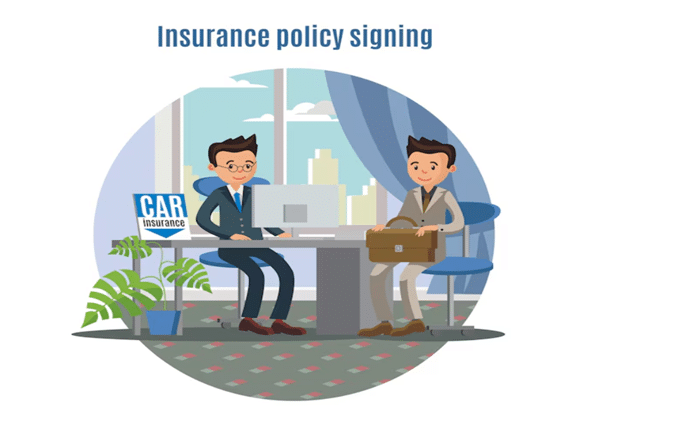
Both companies and employees benefit greatly from having workers’ compensation insurance. It covers the expenses associated with an employee’s occupational injury or ailment, and it also protects the company from expensive lawsuits. By knowing how the premiums are set, business owners can control their expenses and still provide coverage for employees. In this article, we are going to define workers’ compensation insurance, discuss its significance, and then explain the formula used to calculate its premiums.
What is Workers’ Compensation Insurance?
Workers’ compensation insurance provides healthcare, treatment, wage coverage, and rehabilitative services to employees who have suffered injuries while on the job. In return, employees relinquish the right to bring a negligence lawsuit against their employer, thereby making it a two-way process..
Almost every state in the United States mandates that all businesses with employees must have workers’ compensation insurance. Not doing so can incur large monetary fines, punishment by law, and future litigation. Irrespective of who caused the accident at work, such insurance guarantees immediate medical assistance and money for the injured, thus making certain that employees get immediate help and financial assistance..
Why is Workers’ Compensation Insurance Important?
- Employee Protection – Guarantees that employees hurt on the job receive healthcare and income substitution.
- Legal Compliance – Satisfies the criteria of the state’s legal instruments so as not to incur legal hassles.
- Business Protection – Protection against any suits made by workers who are injured during employment.
- Productivity and Morale – Improvement of the workplace conditions, thereby increasing the level of staff morale as well as the overall productivity.
How is Workers’ Compensation Insurance Calculated?
The factors that affect the price of workers’ compensation insurance are industry risks, payroll, and claim history. Knowing these factors is fundamental for business owners looking to control or reduce their premiums.
1. Classification Codes and Industry Risk
Insurance providers sort businesses by industry using NCCI codes or state management agency codes. These codes reflect the degree of danger involved in various occupations.
For instance:
- Clerical employees are usually assigned lower risk ratings.
- Due to the risks involved in their occupation, construction and roofing workers are assigned higher risk ratings.
Every classification code is paired with a certain charge for every $100 of employee earnings which determines the premium cost after calculations.
2. Payroll Size
Employers’ liabilities Incurred with Workers’ Compensation Funded Premium = Payrolls Total Part Rate, and the formula is as per usual:
(Payroll / 100) × Classification Rate = Base Premium
Higher payroll amounts lead to higher premiums because more employees mean greater exposure to potential workplace injuries.
3. Experience Modification Rate (EMR)
EMR, or experience modification rate, is a number that either raises or lowers the premium a company pays depending on how many compensatory claims have been made in the past. This number takes into consideration whether the claims history of a business is better or worse than the average for that industry:
- EMR of 1.0 – Standard risk level (average premium rate)
- EMR below 1.0 – Lower-than-average risk (discounted premium)
- EMR above 1.0 – Higher-than-average risk (higher premium)
Businesses that experience fewer workplace accidents over a while achieve lower EMR ratings and pay less on insurance premiums..
4. Claims History
The claim history of a company greatly affects its workers’ compensation premium. Damage costs or the frequency of claims increase costs, whereas no claims can lead to discounts. Having safety protocols can reduce claims and lower insurance costs.
5. State Laws and Regulations
The workers’ compensation requirements and rates vary by state, which affects premium calculation. Certain states permit businesses to obtain coverage from private companies, whereas others mandate that coverage must be provided through government programs.
6. Additional Coverage Options
Employers can opt for more coverage options, such as:
Employer’s Liability Insurance – Covers extra legal actions that fall outside the normal workers’ compensation suits.
Occupational Accident Insurance – Offers coverage for self-employed subcontractors and freelance workers.
These options raise total premium costs, but they provide enhanced protection.
Tips to Lower Workers’ Compensation Insurance Costs
For business proprietors, controlling workers’ compensation expenses is a must. Try these premium cutting tips:
- Establish Safety Procedures – Teaching staff proper safety measures lowers both injuries and claims.
- Perform Periodic Safety Inspections – Anticipating and correcting unsafe conditions leads to risk reduction.
- Correctly Categorize Employees – Misclassification can result in significant overpayments.
- Motivate Employees to Return – Assisting employees who have sustained workplace injuries to return with light duties minimizes the amount of benefits paid out.
- Check Policies Every Year – Check all your insurances frequently to ensure all expenditures are necessary.
Choosing the Right Workers’ Compensation Insurance Provider
Choosing an insurance provider that you can trust is critical in gaining the required coverage at the most affordable prices. At Kickstand Insurance, we focus on workers’ compensation insurance for the clients’ businesses, providing instant online quotes and professional assistance to guarantee the proper policy is in place. Our staff checks each quote for precision and helps find means for maximizing savings.
Conclusion
Insurance for workers’ compensation is vital for any business that protects the workers and the employers against injury claims for compensation. Knowing how premiums vary helps owners manage expenses efficiently. Companies need to ensure compliance while minimizing risk by adopting sufficient safety protocols and selecting the most appropriate insurance company.
For tailored workers’ compensation solutions, explore Kickstand Insurance and get a quote today.




